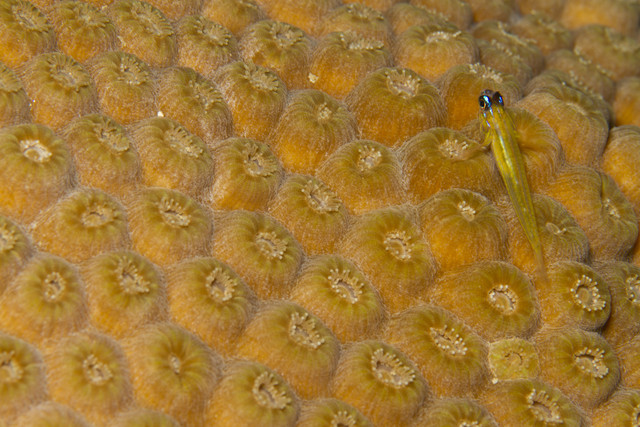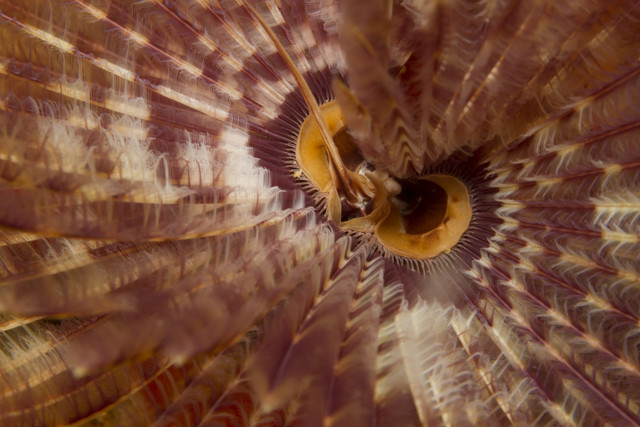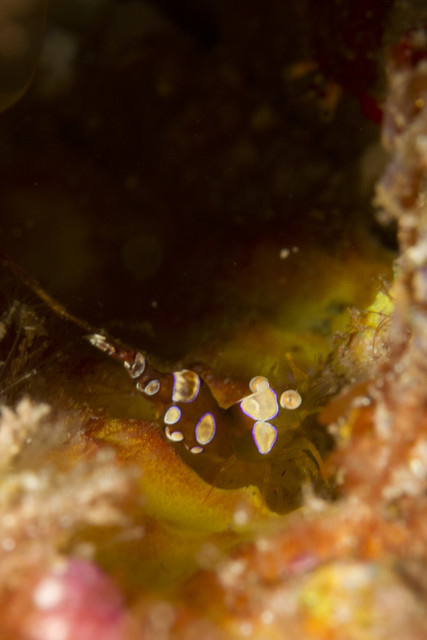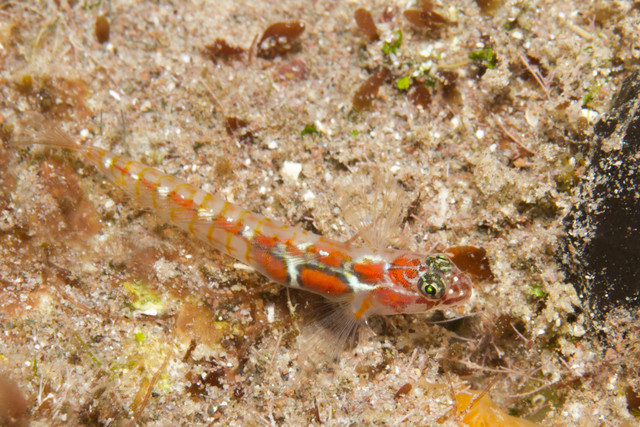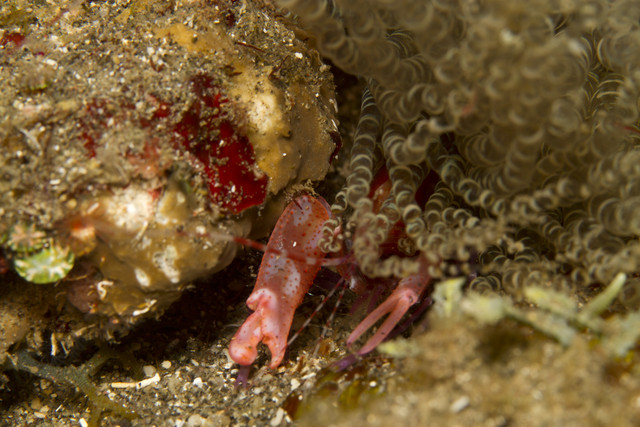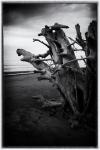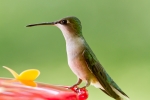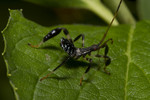underwater
Caribbean Explorer: Patterns of the Reef (part 2)
ktuli — Tue, 11/08/2011 - 17:25
Another installment of the Patterns of the Reef series today.
Technical Data: Canon EOS 7D, Canon EF 100mm f/2.8L Macro IS USM, 1/120th sec at f/16. Image Stabilization on. ISO 100. Ikelite Housing and Port with Ikelite 161 Strobe in TTL Mode. Raw conversion in Photoshop CS5.
This subject should obviously be a lot more identifiable with the small fish on the coral. The fish is a Peppermint Goby (Coryphopterus lipernes) sitting on some Great Star Coral (Montastraea cavernosa).
Probably not as strong as the first example, but still a fun exercise.
- Bill
Caribbean Explorer: Caribbean Reef Octopus Variety Pack Two
ktuli — Mon, 11/07/2011 - 19:06
Ok - it is definitely time for another Caribbean Reef Octopus variety pack... no more hype from me is needed. Enjoy.
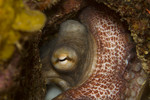 |
 |
 |
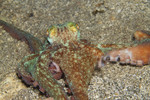 |
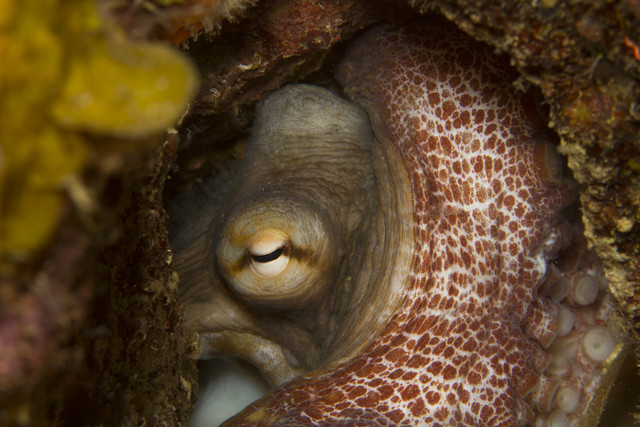 |
|||
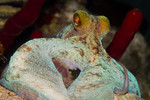 |
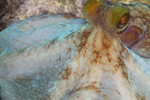 |
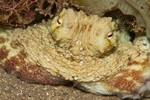 |
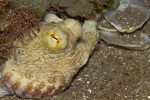 |
Technical Data: Canon EOS 7D, Canon EF 100mm f/2.8L Macro IS USM, 1/120th sec at f/16. Image Stabilization on. ISO 100 or 200. Ikelite Housing and Port with Ikelite 161 Strobe in TTL Mode. Raw conversion in Photoshop CS5.
Just awesome, don't you agree?
- Bill
Caribbean Explorer: Patterns of the Reef (part 1)
ktuli — Sun, 11/06/2011 - 20:43
Getting artistic with the photography underwater is something I've found the be very challenging so far, so from time to time during the dives, if I saw something that I thought worked well as an artistic shot, I would give a little effort at trying to come back with something a bit different from the species identification record shot.
On this trip, the thought that ran through my mind most often when trying this is to capture the patterns of the reef. They're really all over the place - everywhere you look - and this series will be the results of my attempts.
Technical Data: Canon EOS 7D, Canon EF 100mm f/2.8L Macro IS USM, 1/120th sec at f/16. Image Stabilization on. ISO 100. Ikelite Housing and Port with Ikelite 161 Strobe in TTL Mode. Raw conversion in Photoshop CS5.
The subject is a Magnificent Feather Duster (Sabellastarte magnifica) which is actually a type of worm (yes - related to common earthworms). It uses these feathery appendages called radioles as both gills and to trap food particles that are drifting by. When disturbed, the worm will pull its feathery crown back down inside a tube that it has constructed of sand and a glue type substance it secretes.
The photo is of the very center of the crown of feathery radioles - where the food pieces will be passed down towards the mouth.
Like I said - these kinds of patterns exist just about everywhere on the reef.
- Bill
Caribbean Explorer: Squat Anemone Shrimp
ktuli — Thu, 11/03/2011 - 18:12
Ok - it has been a little while since I've shared any shrimp photos, so let's get right to it...
This little critter is a Squat Anemone Shrimp (Thor amboinensis) - or as they are more commonly known.... a Sexy Shrimp (yes, that link does indeed go to sexyshrimp.com!).
They get that name from their tendency to hold their abdomen up and do a little dance of waving their abdomen back and forth.
Unfortunately - no, I did not shoot the video.
Supposedly, these little (about 3/4") shrimp are common in both the Indopacific (ie: Wakatobi) and in the Caribbean. However, this one is the first one I've ever seen. They're pretty popular in the pet trade - and you can plainly see why with their bright colors, interesting patterns, and comical behaviors.
The photo isn't the greatest - the shrimp was hiding down in a hole, and I didn't have anything to anchor myself on, so I wasn't able to use the manual focus adjustment knob, so I had to kind of trust the AF selection and fire the shot off at the right time. Looks like my focus is just a tad off. I also cropped down for the close-up view - mouseover the image for the original.
All in all though, this is definitely an awesome find and a fun species to photograph. I'm already looking forward to another opportunity to do so!
Technical Data: Canon EOS 7D, Canon EF 100mm f/2.8L Macro IS USM, 1/120th sec at f/16. Image Stabilization on. ISO 200. Ikelite Housing and Port with Ikelite 161 Strobe in TTL Mode. Raw conversion and cropped in Photoshop CS5 (mouseover for original).
Caribbean Explorer: Lettuce Sea Slug (part 2)
ktuli — Wed, 11/02/2011 - 18:37
No - really... he may have been right...
 |
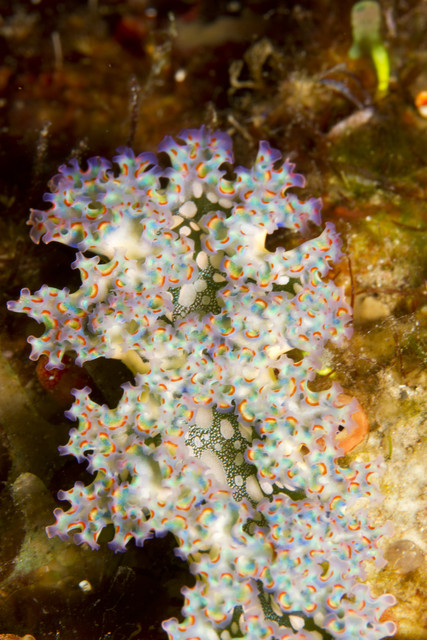 |
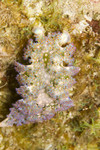 |
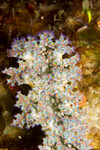 |
 |
Technical Data: Canon EOS 7D, Canon EF 100mm f/2.8L Macro IS USM, 1/120th sec at f/16. Image Stabilization on. ISO 200. Ikelite Housing and Port with Ikelite 161 Strobe in TTL Mode. Raw conversion and cropped in Photoshop CS5 (mouseover for original).
But you have to admit, they certainly do come in a nice variety of colors and patterns to make them interesting. Supposedly the blue versions are rare, but Anya had no problem finding them, but then again, she's a fantastic spotter.
I promise we'll switch to something else tomorrow...
- Bill
Caribbean Explorer: Lettuce Sea Slug (part 1)
ktuli — Tue, 11/01/2011 - 20:35
About midway through the week, after having not been able to find any nudibranchs, I asked our dive guides to help me find some. Our one dive guide, Brett, said that we were moving to an area where we would be able to find some. In particular, he said we would start finding Lettuce Sea Slug (Elysia crispata), and that shortly thereafter, I would get tired of seeing them. I kind of doubted him...
 |
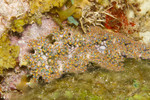 |
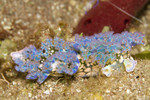 |
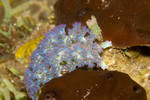 |
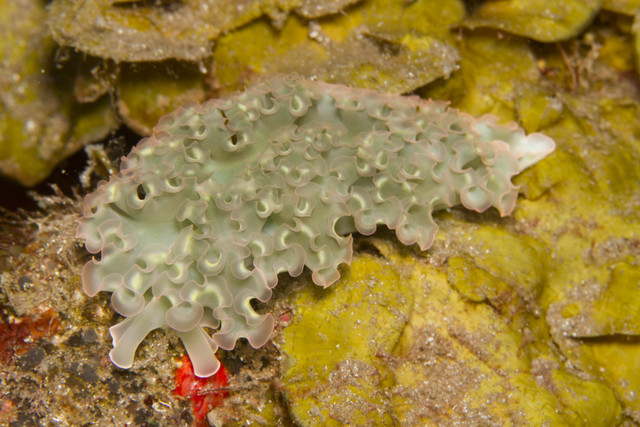 |
|||
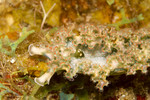 |
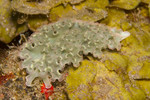 |
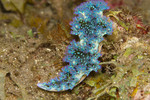 |
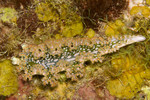 |
Technical Data: Canon EOS 7D, Canon EF 100mm f/2.8L Macro IS USM, 1/120th sec at f/16. Image Stabilization on. ISO 100. Ikelite Housing and Port with Ikelite 161 Strobe in TTL Mode. Raw conversion in Photoshop CS5.
... but he might have been right.
- Bill
Caribbean Explorer: Orangesided Goby
ktuli — Mon, 10/31/2011 - 18:08
Got another tiny fish to share today. I only remember seeing one of these the entire week, but as soon as I did, I knew it was worth taking some time for a slow approach to get a shot or two. The fish is an Orangesided Goby (Gobiosoma dilepis) and is only about 3/4 of an inch long, but I think the most interesting part is how its coloration seems to be underneath its semi-transparent skin.
Technical Data: Canon EOS 7D, Canon EF 100mm f/2.8L Macro IS USM, 1/120th sec at f/16. Image Stabilization on. ISO 200. Ikelite Housing and Port with Ikelite 161 Strobe in TTL Mode. Raw conversion and cropped in Photoshop CS5 (mouseover for original).
Interestingly enough - this little fish dons the back cover of my ID book, so I kind of feel that it is like earning some sort of "street cred" to have come home with that shot.
- Bill
Caribbean Explorer: Red Snapping Shrimp
ktuli — Sun, 10/30/2011 - 20:34
Today's subject is an interesting one... It is called a Snapping or Pistol Shrimp (Alpheus armatus). As you can see in the shot below, they have that one larger claw - but I'll let the video explain why that is cool. These guys were somewhat easy to find on the reef because they usually were found hiding underneath the Corkscrew Anemone (Bartholomea annulata). Unfortunately, that also made them difficult to photograph as they usually were partially obscured, and there was plenty of other things for the AF system to pick up.
Technical Data: Canon EOS 7D, Canon EF 100mm f/2.8L Macro IS USM, 1/120th sec at f/16. Image Stabilization on. ISO 100. Ikelite Housing and Port with Ikelite 161 Strobe in TTL Mode. Raw conversion in Photoshop CS5.
I didn't take the following video (though I certainly wish I worked for the BBC), but take a minute or so and see just how impressive that tiny little claw is...
Pretty obvious where the name comes from, huh?
- Bill
Poll: Caribbean Explorer: Redlip Blenny
ktuli — Thu, 10/27/2011 - 17:53
This isn't the first (nor will it be the last) blenny I'll share here, but this particular species works well for a little voting. There are two main color phases with this species - the all dark reddish-brown ones and the bi-color grey body with reddish head.
The species is a Redlip Blenny (Ophioblennius macclurei). This funny looking little fish are small (around 2-4 inches) and like most blennies stay near holes or burrows that they use to hide in. As you approach, they quickly retreat into the recesses of the reef and will slowly return if you remain still long enough. Because of this, they were somewhat challenging to photograph, and I had to approach them slowly to get a decent shot.
Since I have managed to get good photos of both color varieties, we'll do a slightly different poll today. Instead of picking which photo you think looks better, just pick which fish color phase you like better!
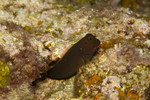 |
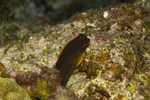 |
 |
 |
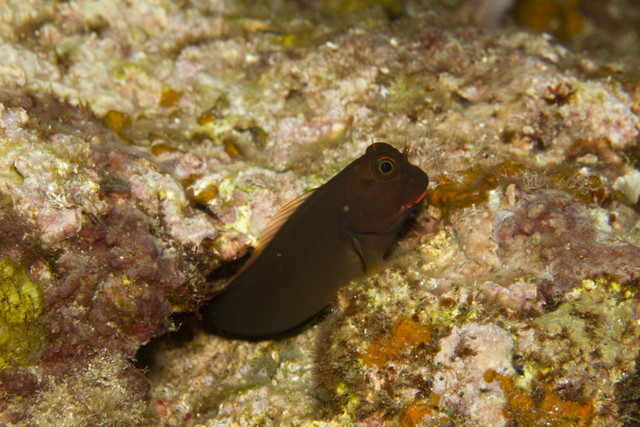
|
|||
Technical Data: Canon EOS 7D, Canon EF 100mm f/2.8L Macro IS USM, 1/120th sec at f/16. Image Stabilization on. ISO 100. Ikelite Housing and Port with Ikelite 161 Strobe in TTL Mode. Raw conversion in Photoshop CS5.
So hopefully by now you know the drill. Place your vote, then leave a comment to let me know why you chose the one you did.
- Bill
Caribbean Explorer: Hermit Crab Assortment
ktuli — Wed, 10/26/2011 - 19:44
Title pretty much says it all... these guys are pretty hard to identify, and I think some of them aren't even in the book. Most of them appear to be Red Reef Hermits (Paguristes cadenati), but the other three I can't tell for sure.
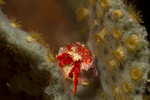 |
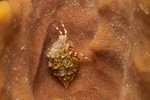 |
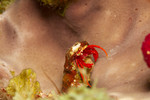 |
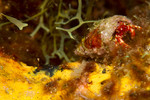 |
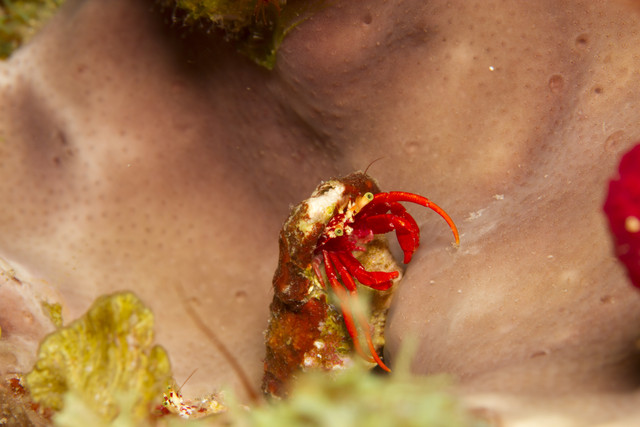
|
|||
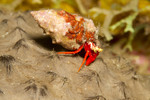 |
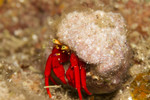 |
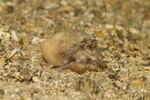 |
Technical Data: Canon EOS 7D, Canon EF 100mm f/2.8L Macro IS USM, 1/120th sec at f/16. Image Stabilization on. ISO 100. Ikelite Housing and Port with Ikelite 161 Strobe in TTL Mode. Raw conversion in Photoshop CS5.
Enjoy!
- Bill

